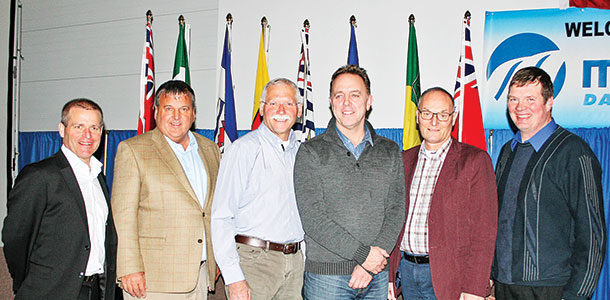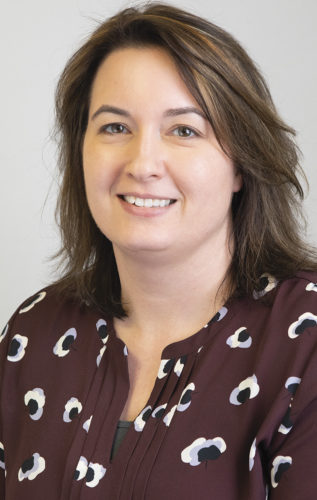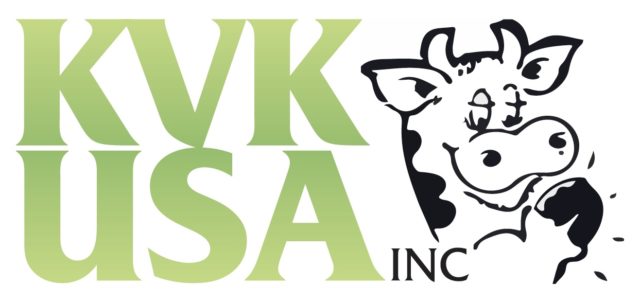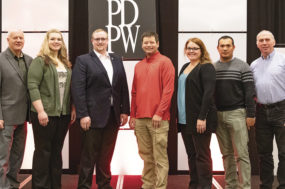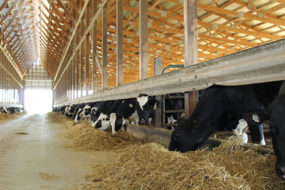The second annual Global Dairy Summit was held Feb. 6 at the Canadian Dairy XPO in Stratford, Ontario. Six producers gathered from Canada, the U.S., Israel, the Netherlands and China to enlighten others to what dairying is like around the world.
The six producers included:
• Berwick Settle from Hau Xia Dairy Farm, in Sanhe, Heibei, China, which is near Beijing. Settle is originally from New Zealand and spent several years traveling the world before settling in China two years ago. His herd is producing 66 pounds per cow per day.
• Bram Prins from Ten Boer, in the Netherlands, farms with his brother, son and son-in-law on a family farm. They manage 435 acres and 300 milking cows housed in a freestall barn. Seven years ago they installed an automatic milking system, and the herd is currently milking at 62 pounds per cow per day. A contractor does most of their field work.
• Dirk Young milks 1,250 cows, producing 90 pounds per cow per day on his family farm, Twin Birch Dairy, in Skaneateles, New York. Young took over the farm from his father and farmed with his brother until seven years ago, when his brother decided to exit the business. He now has 24 employees and a couple of junior partners. In addition, he farms 2,500 acres, where he harvests his own forage and grains.
• Tom Hoogendoorn from Valedoorn Farms, in Agassiz, British Columbia, farms with his brother, his brother’s wife and his nephew. They strive to keep a family atmosphere on the farm, especially when it comes to working with their employees. His cows are producing 79 to 84 pounds per cow per day.
• Brian Anderson farms with his wife, son, son-in-law and two employees at Athlone Farms in Tavistock, Ontario. They have a 300-head herd, including youngstock, comprised of purebred Holsteins and a few purebred Jerseys. Their 140 cows are milked in a double-10 parlor and produce 77 pounds per day. The freestalls are bedded with biosolids from the farm’s anaerobic digester. The family also farms 600 acres.
• Lenny Kaplan is the general manager at Ma’ale Gilboa Dairy Farm, in Kibbutz Ma’ale Gilboa, Israel. Kaplan was born in the U.S. and moved to Israel 35 years ago to volunteer at a kibbutz.
He met and married a local girl and became involved in the dairy on the kibbutz, even though he had no prior dairy experience. The farm milks 350 cows three times a day in a double-10 milking parlor. Cattle are housed in loose corrals and are producing 93 pounds of milk per cow per day.
What is the business structure of your farm?
SETTLE: Our farm is definitely run as a corporate entity. We have a holding company in the Cayman Islands. I report to a CEO, and the CEO reports to the board of directors. Our founders are American, and since the company is not based in China, we do not qualify for Chinese farm subsidies.
PRINS: We have a family operation. My brother and I own the land. According to our succession plan, when we pass away it is automatically transferred to our sons.
KAPLAN: We are a cooperative farm owned by all 150 members of the kibbutz community. Even though I work on the dairy, I don’t have any more ownership than my neighbor, who has nothing to do with the farm. Any profits made by the dairy go directly to the kibbutz. Every year, I develop a plan for the leaders to review in order to get some of the money back to invest in the farm.
YOUNG: We started as a traditional family farm with my dad as the sole proprietor. In 1981, we formed a subchapter S corporation and operated under that until my father wanted to retire. At that time we adopted a limited liability corporation (LLC). I manage the entire farm entity.
I have a non-family junior partner that runs the farming operation and another non-family profits-interest partner that runs the dairy. Profits are shared with them so they can grow into ownership of the business.
We’ve also set up a dynasty trust, which currently holds 30 percent of the farm’s assets. Our intent is to move more assets into this trust so when I pass away this trust will be there for the junior partners to use.
HOOGENDOORN: My brother and I are shareholders in the corporate entity. Once we decide which family members are interested in farming, then we will make a plan to transfer it.
My children are both employed off the farm and have four more years to decide whether or not they want to come back. If they decide not to join the farm, it cannot be reversed because my nephew is very interested and we will start transitioning it to him.
ANDERSON: We have two corporate entities. There is Athlone Farms Inc., which is the farm itself, and there is Athlone Bio Power Inc., which is the digester. For tax reasons, we needed to create a separate entity because too much off-farm business would affect our flexibility as a farm. My wife, Wendy, and I are shareholders of the farm and digester, and the next generation has some shares in the digester.
How and why have land values increased in last five to seven years?
ANDERSON: In our area, land is selling for $16,000 to $18,000 per acre. It will push more than $20,000 to $22,000 an acre if it’s close to a neighbor or a couple of neighbors that need that land. The success of the dairy industry has enhanced that ability to pay those large prices.
General competition and limited land base has pushed those prices quite high. It certainly has made our pencil sharper and increased productivity both in dairy and crop yields.
HOOGENDOORN: The Fraser Valley is a very small place. We purchased 16 acres for $750,000 five years ago. We could turn around and sell it for $1 million today. We can’t even fathom buying land for farming purposes. We buy land for an investment. It’s very hard to buy land unless you have a lower debt structure. It also makes succession planning very hard because I can’t afford to buy myself out.
YOUNG: Ten years ago you could buy quite a lot of land for $1,200 per acre; now its $8,000 an acre. We usually get quite aggressive if a farm comes up for sale, especially if it borders us. We like to be in a position to take advantage of opportunities when they come. If you don’t have land, you can’t add more cows and can’t grow.
KAPLAN: Israel is only 65 years old. There really isn’t any land that is privately owned. All of the agriculture land is government-owned. It is sort of a long-term lease, and the government is very careful that land given for agricultural purposes is farmed. You can sell your farm and your quota, but you cannot sell your land. The government will decide how to distribute it.
PRINS: Land prices in our region are $25,000 per acre. We are in a low region that is not always suitable for growing crops. Good land sells for more than $50,000 per acre. In the last few years, land prices in Denmark dropped 50 percent due to the financial crisis.
Our prices only dropped 5 percent and are slowly increasing again. For the next generation, we want our land base, if possible, to be 50 percent in ownership, 25 percent in a long lease contract that offers a return on the investment and the other 25 percent annual contracts.
SETTLE: We are on a 30-year lease and have 22 years left to go. The government, with the exception of 1 percent owned by private individuals, owns most of the land in China. All of the land is set up on 70- to 90-year leases.
No one knows what’s going to happen at the end of the lease because it hasn’t happened yet. China has only been around since 1949, as it currently exists. In a worst-case scenario, at the end of our lease we could get kicked off land within a year.
Does your land base support your farm’s forage needs?
SETTLE: Last year, we made 30,000 tons of silage, working with 3,000 individual village farmers to do so. In our system, we deal with 15 corn silage buyers that collect the silage from their village. The farm pays the village heads and they distribute it within their village.
We do not pay the village farmers because it would be a contractual nightmare. Every truck is weighed into our farm; we test for dry matter and pay accordingly. We can buy supplements on the international market. Most of our grain is dried distillers grain out of China, and we’re buying alfalfa from the U.S.
PRINS: We grow 85 percent of our forages and purchase the rest, especially corn silage. Seventy percent of our land is grassland-based. We re-seed every year and use pesticides and hope to increase our yields by 25 percent. We use our leased land to grow cash crops and different varieties of grass.
KAPLAN: We average 18 inches of rain a year. All of our grains are imported from other countries. The only things we grow are forage and silage. Our dairy farm is very focused on dairying. I help decide when to cut and at what dry matter, but other members of the kibbutz farm the cooperative’s 2,500 acres.
YOUNG: We grow most of our own feed, including forage and energy crops. We purchase a feed mix containing an amino acid profile, fat and minerals. We also purchase canola meal for protein.
HOOGENDOORN: We own 160 arable acres and rent a lot of land. We make our own silage and buy all of our hay and grain.
ANDERSON: Most of our land is close to our home farm. We grow our forages and grain and bring in protein.
What have you implemented recently that is doing well, and what is not going well?
ANDERSON: We’re pleased with the results we’ve had so far with our biogas system, and we like the bedding we’re using for the cows.
HOOGENDOORN: We turned over the day-to-day management of the farm to my nephew and another employee. The farm is still running well or better. We also put in a manure separation system to comply with stricter regulations and reduce the need to spread in the summer. Now, only liquids go on the grassland and we’re bedding with solids in comfort stalls. The only regret I’ve ever had is we didn’t buy enough quota when it was still relatively cheap.
YOUNG: I turned over management to a couple of young managers and it’s working really well. On the farm side, we put activity monitors on our heifers, and that’s been wildly successful. Our pregnancy rate is up about 40 percent on heifers.
KAPLAN: I’ve been able to build a new team to run the farm. As far as the cows go, we’ve been investing in animal welfare and the environment.
PRINS: The most stupid thing we have done is biogas. We took out our digester in the last five years due to the fact that market circumstances totally changed and we suffered a huge loss. We had an automatic feeding system and took it out due to the fact we did not have enough capacity and maintenance costs were too high.
We were successful in introducing the milking robots. We are very focused on keeping things simple, including our financial and accounting records.
BERWICK: We’re not environmentally compliant, but we are a lot better than what we were a year ago. In summer, all of the land is in corn and manure was dumped in ditches. This year we leased more land and didn’t dump any more.
What isn’t going well is learning the Chinese language. PD
PHOTO
Six dairy producers came together at the Global Dairy Summit to share what dairying is like in their part of the world. They included (from left to right) Tom Hoogendoorn, Canada; Dirk Young, U.S.; Lenny Kaplan, Israel; Berwick Settle, China; Bram Prins, the Netherlands; and Brian Anderson, Canada. Photo by Karen Lee.

Karen Lee
Editor
Progressive Dairyman
